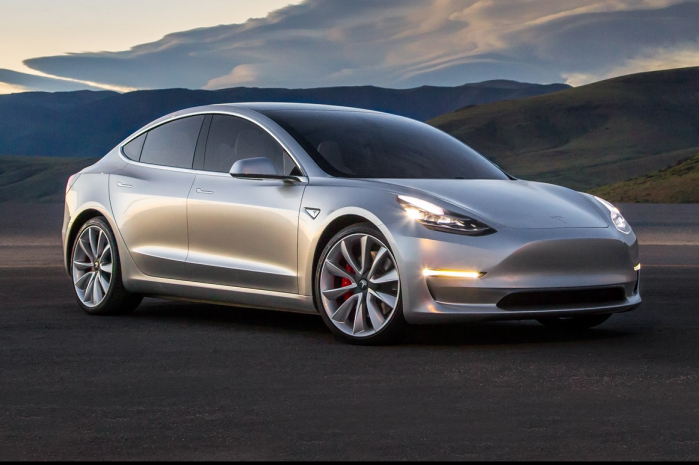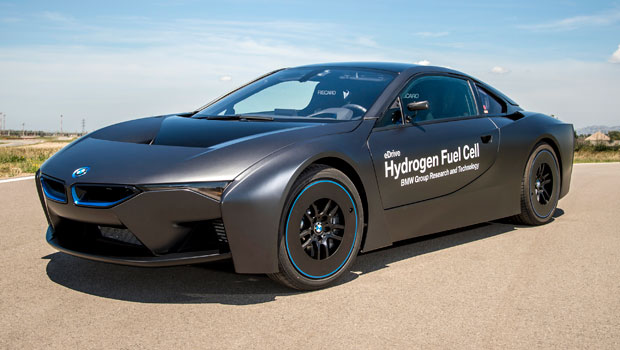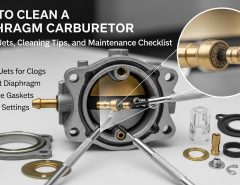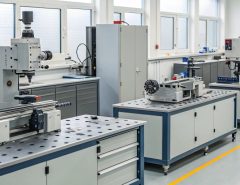Now we are, the direction taken by the major car manufacturers seems to be increasingly oriented in proposing green vehicles.
This trend seems to have become quite popular today, so much so that in the catalogs of almost all car manufacturers there is at least one model with electric traction (or at least hybrid).
At the same time, the charging infrastructure is also expanding very fast, reaching areas that are wider and wider. Enel and other providers are installing charging stations in practically all the main cities, but also in hotels, companies and shopping centers, entrepreneurs and individuals are arranging to place personalized recharging points. Tesla is privately investing significant resources to expand “Super Charger” charging points.
The governments, in the front line to face the climate changes due, in large part, to the emissions of fossil fuels. For this reason, the main institutions offer a series of economic incentives which in addition to coping with global warming can also translate into a substantial improvement in air quality at the local level.
But the future of sustainable mobility is not only electric, in fact we have been talking about hydrogen cars for years: Innovative, futuristic, visionary, but what are they? How do they work? And above all, will they be able to stand comparison with electric cars?
How a hydrogen car works: The Fuel Cell
Before advancing any comparison with electric cars, I briefly summarize the operating principle of a hydrogen car.
The technology that allows to convert hydrogen into energy is the fuel cell. This device allows to obtain an electric current flow combining hydrogen with oxygen in an electrochemical process.
In fact, a fuel cell is an electrochemical reactor in which the reagents are hydrogen and oxygen and the products are water and energy. According to the many practical applications in which these fuel cells can be used, there are different types, each with its own characteristics and therefore the related working conditions.
The principle of operation is the same for all types of cells, there is an ion exchange between two electrodes (anode and cathode) and at the same time generates a passage of electrons, electricity in fact. Substantially the different types are differentiated by:
- The material with which they are made.
- The type of fuel used to make the reaction take place.
- The operating temperature at which the electrochemical process takes place.
In the automotive field the fuel cells with proton exchange membrane (known by the acronym PEMFC) are used because of their particular characteristic of going to full speed at a low temperature and easily achievable (about 60° C).
The other types of cells require much higher operating temperatures that can go from 200 up to 1000° C and therefore not suitable to be placed under the seat of a car.
A hydrogen car that exploits this technology is universally known as Fuel Cells Electric Vehicle (FCEV), which is a vehicle equipped with an electric motor that is powered by the chemical energy obtained through the fuel cell.
Hydrogen vehicles are, in fact, electric vehicles!
Schematically in an FCEV the hydrogen stored in the carbon fiber tanks is directed towards the fuel cell in which it reacts in contact with the air (oxygen) drawn from the outside by means of special fans.
When accelerating, a signal is sent to the power control unit, a control unit that manages the flow of H2 and O2 supplied in the fuel cell and which then regulates the electric power supply for the engine.
Then there are also other equipment such as the system to recover energy during deceleration and a battery that can assist the cells during acceleration.
The only product that is released from the process is water which is expelled through the exhaust pipe.
In addition to the FCEV there is another type of vehicle that uses hydrogen: there are particular internal combustion engines (HICEV) in which a fuel obtained by combining hydrogen with petrol or methane can be used.
I will not talk about these vehicles because they are not directly comparable to electric cars but rather to vehicles equipped with a traditional heat engine.
Continue Reading: What A Mechanical Engineer Does: A Guide To The Profession
Production and Distribution
Ok, we understand how a hydrogen car works, but how do you get supplies?
Everyone knows that hydrogen is the most present element in nature but since it is always linked to other substances it is also very complicated to isolate it and store it in confined spaces. The method of producing pure hydrogen that is associated with renewable energy is electrolysis, a chemical process in which by passing electricity into water, the decomposition into oxygen and hydrogen is obtained. The real efficiency of this method is much discussed: from the point of view of the energy balance, in fact, consuming electricity to separate hydrogen, which in turn will be used to generate electricity, is a very inconvenient process. However, electrolysis can become interesting when there is large availability of energy that for some reason should be dispersed, not surprisingly one of the largest productions of hydrogen from electrolysis in the world is in correspondence of large hydroelectric plants.
Once the hydrogen has been produced it is stored in special high-pressure containers ready to be transferred to the filling stations where it will be possible to fill the tanks from the FCEVs.
With regard to storage and transport it is well known that hydrogen is a very difficult customer.
Hydrogen can be stored and distributed directly on the spot or transferred to the supply stations in different ways:
- High pressure piping specifications (up to 1000 bar).
- Tank trucks with high pressure tanks.
- Cryogenic tankers transporting liquid hydrogen (-40° C).
The whole supply chain is very complex, the various phases are rather delicate as the stored and transported hydrogen must be kept at very low temperatures and at very high pressures.
You may also like: types of headlights
With these quantities at stake the great attention required mainly translates into a rising of the management cost.
I also want to emphasize that given the numerous components such as high pressure ducts, compressors, valves, storage tanks, transport tankers, etc. it is evident that the distribution of hydrogen reflects very similarly that of fossil fuels (gas and oil pipelines).
EV vs. FCEV
Now that we have an idea of how the FCEVs work and how the hydrogen distribution takes place, we are ready to make a comparison with the classic electric vehicles (EV).
An FCEV is nothing but an EV that autonomously produces the energy to be stored in the battery using the H2. The presence of the fuel cell makes the construction complexity greater and for this the cost of an FCEV will certainly be higher (or at most equal) to that of an electric car in which this component is not present. In terms of performance the two typologies are practically analogous as pushed by the same engines and also with regard to the autonomy the hydrogen tank, as well as for the most modern batteries, allows to travel about 400-500 km.
If the energy balances are compared, the FCEVs do not hold a comparison with the EVs. Before powering the engine of an FCEV it is necessary to convert the energy several times from the primary source, in each of these steps there is a dispersion of energy due to the efficiency of each process.
Without being too verbose and dwelling in a thermodynamic analysis, I report only a graph extracted from the article “Does a Hydrogen Economy Make Sense?” In which it is shown how Electric cars are about 3 times more efficient than a hydrogen machine!
From 100 kWh of energy produced upstream to the EV, in fact, about 70% arrives, while at FCEV only 20%, in this case, about 70% of the energy is dispersed.
H2 distributors vs. Charging columns
As far as the EV recharging infrastructure is concerned, a more heterogeneous and reliable electricity network exists on a large scale. The charging columns can be easily connected to the electricity grid and as already stated, their presence is now consolidated in the main population centers, in the main motorway networks but also in the individual homes of the owners of an EV. To recharge an electric car we do not need anything that we do not already have.
Speaking of infrastructure for distributing hydrogen I have already described how transportation from the production centers to the filling stations takes place and to date there is no established distribution network. The first and so far only refueling station that is open to the public is located in Bolzano (H2-suedtirol) and was inaugurated in 2014. Hydrogen is produced locally from renewable sources but as I recall that the production of hydrogen is from an energy point of view an inconvenient process here is used as much as possible the daily price curve to get the lower costs of production. At the moment there is no possibility that hydrogen vehicles can stand comparison because the realization of a new large-scale infrastructure, considering the various components involved, would turn out to be a very onerous and difficult to design project.
However, hydrogen dispensers have a big advantage compared to electric columns: refueling times. As we know, to recharge the batteries takes some time. Tesla, for example, with its superchargers has managed to reduce the time of a full charge to less than 1 hour and a half, while the complete refueling of a hydrogen car is comparable to that of a gas vehicle (about 10 min.).
Since you are aware of how complicated it can be to create a hydrogen distribution network, does it make sense to invest in this technology?
The answer comes by itself and this is perhaps why many car companies have significantly reduced (and in some cases abandoned) hydrogen car projects. The only big company that is investing in hydrogen for large-scale vehicles is Toyota, which has been running the Mirai project for some time.
However, it is not clear whether he is trying to take an outsider road by proceeding against the trend of other EVS-funded houses or if investments in this sector are predominantly driven by pure scientific research.
A separate argument must be made for large commercial vehicles or vehicles for public transport. In this case, the path and consumption of each vehicle is known and therefore it is possible to program refueling at predefined checkpoints without the need for a large charging infrastructure.
In addition, the large dimensions of the means allow to save on costs due to the very compact components present on the cars and it is possible to install increased tanks substantially increasing the autonomy.
For these reasons, many cities have started projects aimed at financing fleets of public fuel powered vehicles.
Conclusions
The decarburization of the transport sector is a goal that must be achieved and both electric cars and hydrogen cars offer a mitigating this problem.
To date, the comparison between the two technologies hangs significantly in favor of electric cars both in terms of energy efficiency but above all due to the absence of an adequate hydrogen distribution network. Hydrogen cars undoubtedly have their charm, the development of new technologies will certainly help to make them more convenient and reliable, especially in relatively small scales (such as for some fleets of public transport). However, I think it will be very difficult for them to gain the upper hand on the roads and I fully agree with those who say that “hydrogen works well for rockets and not for cars!”
On the contrary, electric cars will acquire more and more popularity in the coming years and the progress of research will bring a great breath of innovation.
Tags: Electric, electric cars, Hydrogen, Hydrogen Cars






Leave a Reply